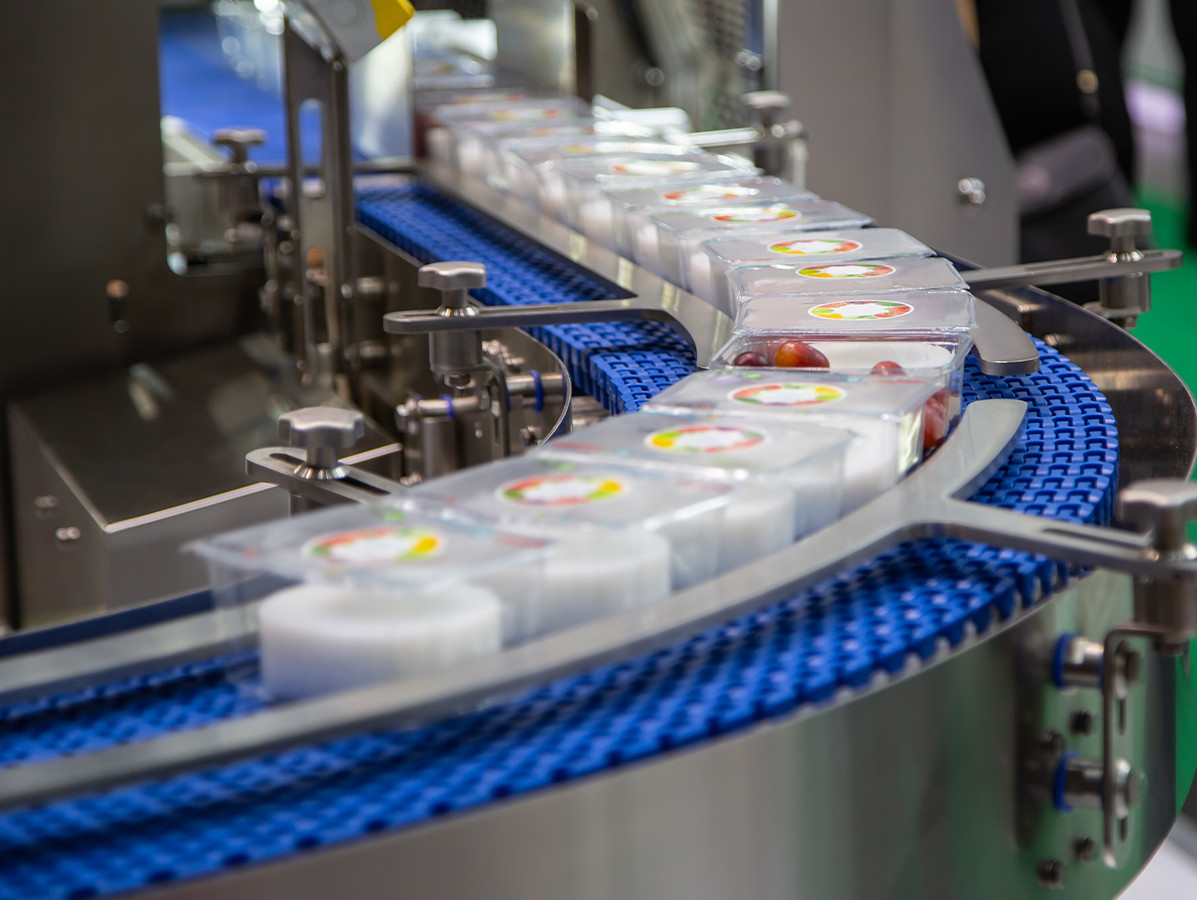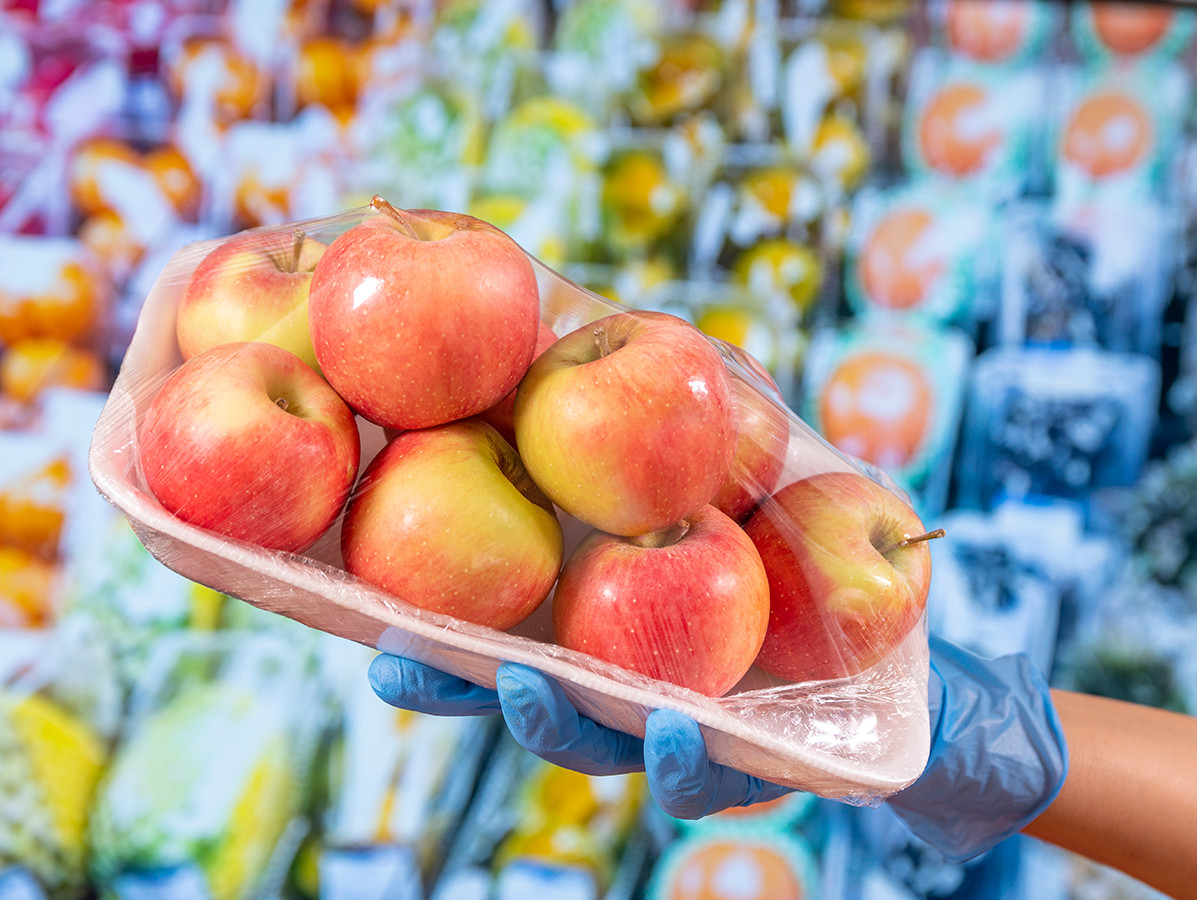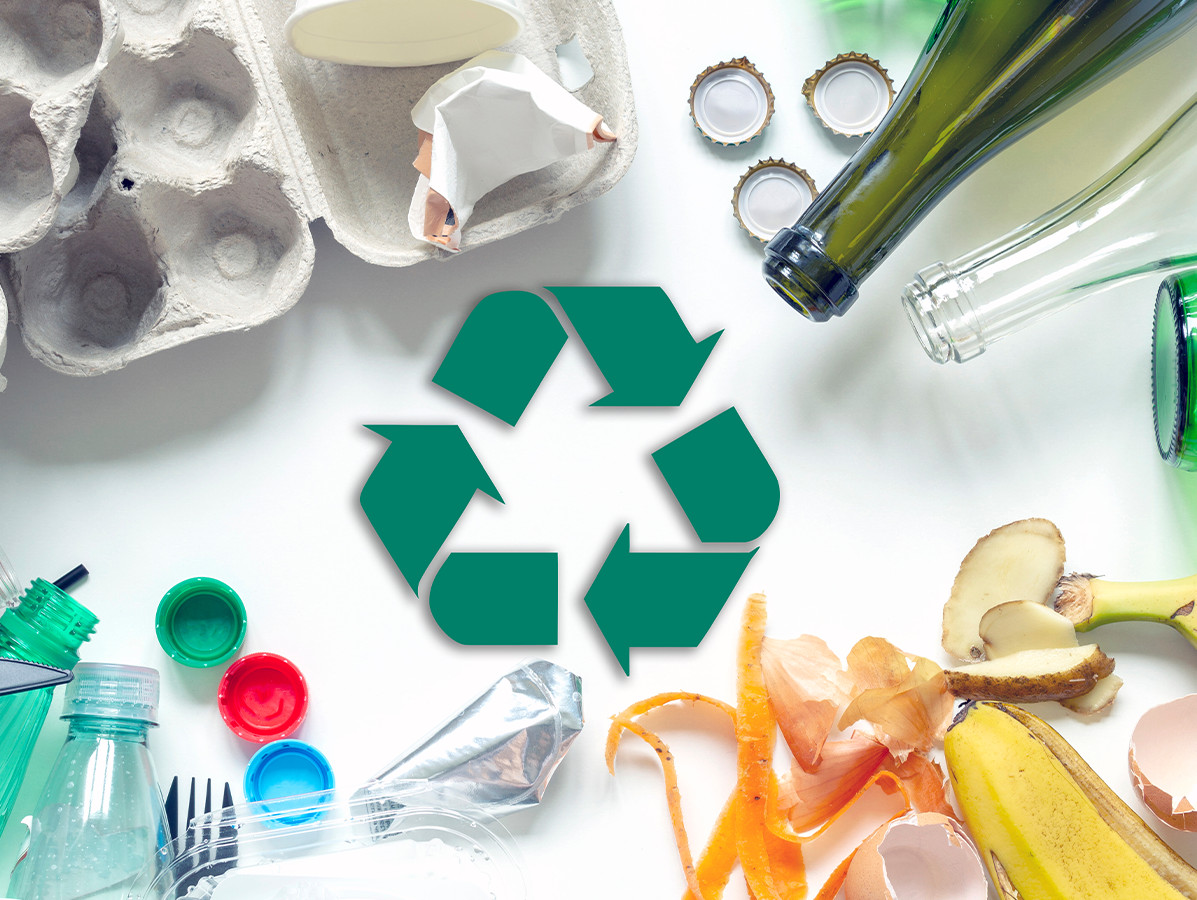
A food producer, a supplier of packaging film, a machine manufacturer and an automation expert, all of whom also happen to be consumers, sit down together in a Zoom meeting to discuss trends and developments in future-proof packaging.
When it comes to making the packaging chain sustainable, there are three important pillars: reduce, replace and recycle. Yet that is not enough, especially for food. Future-proof packaging solutions for food have to meet many requirements: be functional, guarantee food safety, prevent food waste, extend shelf life, optimize product freshness. Sometimes the requirements are completely at odds with each other.
We discuss this with:
On February 21, 2019, the so-called "Plastic Pact" was signed by government and industry. The pact was signed by individual plastic-producing and plastic-applicating companies, including a number of members of the FNLI and the CBL. The signatories have committed themselves to a set of ambitious supra-statutory agreements. For example, the amount of plastic we use in the Netherlands must be reduced by 20 percent by 2025 and 70 percent of single-use plastic products must be recycled to a high standard in four years' time. To achieve these goals, a chain approach is required, says the Pact. The FNLI Sector Sustainability Plan also came into effect in spring 2019. With this, all members strive for as much recyclable food packaging as possible in 2025, a responsible and sustainable use of raw materials and unambiguous and transparent consumer information about recycling or separating packaging.
Bert Verheij (Global Flexibles). "Everyone is aware that something has to be done. The retail sector signed the Plastic Pact last year. That means that the suppliers to retail have to start moving to meet the targets in that pact. Last year we received almost identical requests from various angles, containing all the specifications that those future packages must meet."
"I do expect more organic packaging as a result, for example from seaweed and elephant grass," says Roy Meenderink (delaware). "You can say 'the consumer doesn't want to pay for it', but I don't feel that I as a customer am consciously included in that. If sustainable packaging is the standard, you have no choice at all as a consumer."
Dick Kuperus (Global Flexibles): "Still, it remains a matter of looking at what is possible per product. For example, a mono-material is not always suitable for the packaging of a smoked sausage, because this packaging must sometimes also remain good in boiling water. The heat resistance of that material is lower. Monomaterials (such as mono-Apet) are also not suitable for some fatty and protein-rich products. Fat and protein can make it difficult to seal. For those products, a PE layer is essential."
"True," says Rudi Holleboom (Hogeslag Olst). "That's also why we don't switch to monomaterials. Our packaging must be functional. The quality of our product is the most important thing. We have been splitting and refining our meat more and more in recent years, and have invested in a new automated cutting and packaging line. With our current films, we can guarantee a shelf life of over 35 days on technical cuts and 17-30 days on minced product. These periods are necessary because our customers want to keep meat in stock. The EVOH in the film has a clear purpose. It provides the necessary barrier to keep oxygen out and MAP gases in. Vacuum packing as we do also prevents freezer burn of the products. Quality is paramount for us. The boxes in which we deliver the meat are made of coated cardboard. That coating is necessary, because they have to remain sturdy in the refrigerator, but also in the freezer for at least three years."
Global Flexibles is keen to lead the way in sustainable alternatives. "Recyclable and preferably as thin as possible, that's what we've been shouting for years," says Bert Verheij. "That's why we keep innovating. Our latest development is a recyclable film that can extend shelf life and freshness. The first tests in a foreign laboratory show that it works. We are now in the middle of practical testing. Just a little while longer, and then we can launch it onto the market."

A simple way to reduce the plastic pile is to make the packaging material thinner. That sounds simpler than it is. "Many producers think that a thinner material is less strong," responds Bert Broos (Repak). "In thermoformed packaging the material stretches the most at the corners; so the packaging is often thinner there. If it is too thin, the packaging can tear there. We have solved this with a unique forming system called 'Rapid Air Forming'. It ensures that during the forming process extra foil material is placed in the corners for extra strength. As a result, you can still use a thinner foil for the entire product."
"Foil is seen on the one hand as a necessary evil, but on the other hand it is a very critical part of the final product," says Dick Kuperus. "You don't change a good packaging so quickly, nobody dares to burn their hands on it. If it doesn't turn out well in some way, you have a problem. Very often the thickness of a film is not up for discussion at all. As to why, I often hear: 'No idea. It has always been this thickness'. Sometimes a thicker material is a conscious choice, although this is not always linked to its functionality. Thinner packaging is often unnecessarily associated with an inferior product; solid packaging stands for quality. For about three years now, people have been more open to alternatives. But this leads to the following problem: thinner is not always cheaper. And above all it must not cost more!
Rudi Holleboom: "We recently looked at ways of reducing packaging materials. We could, for instance, pack whole crates; then we would only have to seal the top layer. But then we would have to buy other crates and new packaging machines. Those are big investments. Our experience is that our customers are not willing to pay more for more sustainable packaging if it only adds cost."
Fortunately, new packaging machines are not always necessary: with simple changes to a few parameters and settings, most packaging machines run just fine on thinner films. Bert Broos: "If a customer is still unsure, we will test the material on a machine in our factory. We often do this in consultation with the film manufacturer. Sometimes we have to adjust parameters or moulds, or the film manufacturer decides to fine-tune the recipe to make the material even more mouldable, sealable or peelable. It's an interaction. These are really fun processes."
Whatever the case, there is still a lot to be gained in reducing packaging materials, Bert Verheij is firmly convinced. "How many examples do you want to have?" he laughs. "Think of the jars for medicines and vitamin preparations. Often there is only a very small layer of pills in such a thick-walled jar; nobody mentions that. Or look at candy and bread packaging, and at push-through strips where the contents can be put in much more efficiently. There are countless packages that can be made smaller, thinner or single-layer."

"Reducing material can also be achieved by producing even more efficiently," states Bert Broos (Repak). "We receive many questions about improving line efficiency: 'How can we make the machine run as efficiently as possible as part of a total line, with as few machine stops as possible? Changing packaging sizes and/or materials must be done as quickly as possible, safely and ergonomically. We have quick-change systems for this purpose. And we are currently building a new machine generation with a completely new control system, even more focused on the exchange of data that helps to optimize the planning in the factory."
"Every time you have to convert your machine for a new production run, you have to deal with a piece of waste on the line" agrees Roy Meenderink (delaware). "If you can plan this more tightly, it not only results in cost savings, but also in less waste. ICT is indispensable for this. Before you can improve, you have to measure what you do. The Delaware ERP solution is a package in which all applications are in one system. It has to work, and that is our number one priority."
Bert Broos laughs: "The same applies to the packaging machine. The tailpiece of a line must never become the bottleneck. It just has to run. Because of corona, it is now more difficult to provide physical service when needed. As an alternative we have made instruction videos. We are also working on setting up live video links for service technicians."
Roy Meenderink: "I am very much in favor of standardization, which would save the industry a lot of costs and makes data-driven production possible, throughout the chain. Choose a standard for the packaging you want to put on the market, for how you build machines and for the software it runs on. This makes it much easier to link different applications. Capturing data is not the problem in most systems. The challenge is to process that data properly and make it available. Most machines are already connected to the Internet, but everyone guards their own data. Only when this data is shared will we be able to make real progress in demand-driven production. The result: less plastic and less food wastage."
Reducing, replacing and increasing efficiency; these are the steps that progressive companies in the industry are already taking. But that's not all, says Bert Broos: "We must not only be sustainable at the front end, but also at the back end. Most packaging material still goes into the incinerator at the moment."
"This is because it is often completely unclear to consumers which waste stream a package should go into," says Rudi Holleboom.
"That's why I'm so opposed to those compostable materials that look like plastic," responds Bert Verheij. "Look, Dick and I are film-crazy, we can tell what the material is by looking at it. But most people don't recognize it. Sometimes it is written somewhere in tiny letters. Nobody reads that, do they? Even within Europe the rules are not clear and there is confusion. We sell a recyclable thermoforming material with EVOH as the barrier layer, Solopack. In England film with EVOH may not be offered for recycling, in the Netherlands it may. Another material, OPP/PE, is considered recyclable in Germany, but not in the Netherlands."
Dick Kuperus: "In short, the post-use route is not yet properly regulated. The government needs to give more direction here. Perhaps it will work if there are more mono-materials. At the moment there is simply too little supply of differentiated materials, and sorting and recycling do not generate sufficient profit for waste processors."
Bert Verheij: "The communication should not only come from the government, Dick. I think we too need to communicate more and better about this. It is a joint responsibility. We therefore advise our clients, to ensure that they are at least on the right track."
The men nod; they all agree on that. But where do you start? In schools? Government campaigns? Retail? "I wonder if it will work," indicates Rudi Holleboom. "In the past, croquettes came in a simple corrugated cardboard box, which was fine. Now you buy them in a luxury full-colour printed packaging. The consumer always opts for beautiful, luxury packaging in the store. In other words: what the consumer says he wants and knows what is sensible, and what he shows in practice, are very often contradictory."
"Exactly," says Bert Broos. "So it is with the reduction of plastic. Last year, with the coronapandemic, people actually started to prefer prepackaged products en masse, understandably from a hygiene point of view."
The course must be changed, that much is clear. The fact that the ship, in the middle of the transition, can suddenly change course does not make it any easier.
Photo packaging line: © itsanan/Shutterstock.com, photo apples: © Stockwars/Shutterstock.com, photo recycle: © Antonsan/Shutterstock.com
Source: Vakblad Voedingsindustrie 2021